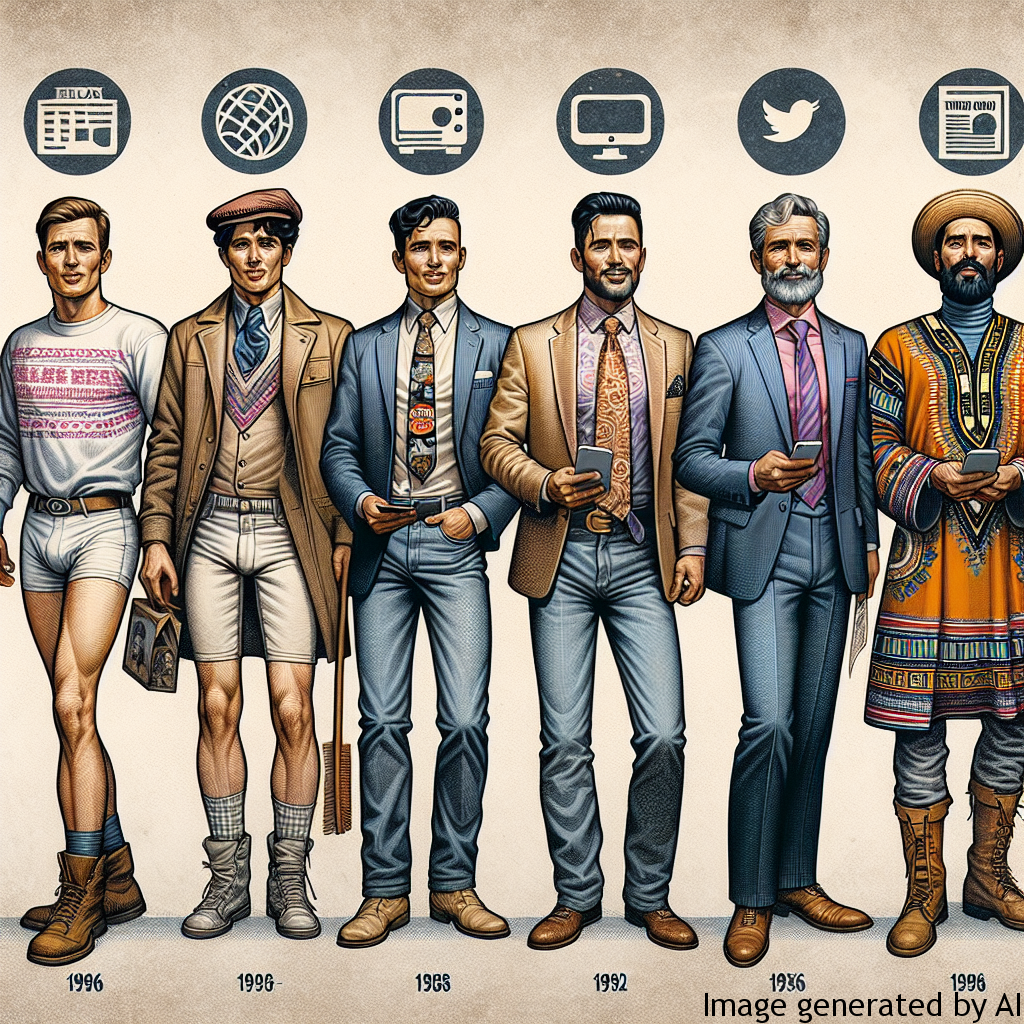Introduction
The media has a significant influence not only on shaping societal norms but also on individual ideals relating to fashion and sexuality. Men are not exempted from this: their perceptions on these subjects are significantly swayed by the media. This article examines the media’s influence on men’s fashion and sexuality, including how these are conditioned by gender expectations and their impacts, and offers suggestions to improve mental health in the context of gender roles.
Description of Gender Expectations and Their Influence on Men’s Mental Health
Emergence of Traditional Gender Expectations
Traditionally, men have been presented in the media as symbols of strength, dominance, and emotional resilience. This feeds into widespread norms of masculinity requiring men to uphold these characteristics, leading to unrealistic expectations.
Effect on Men’s Mental Health
The pressure to conform to these societal roles directly impacts men’s mental health. Many feel forced to adopt a stoic facade, which often becomes a source of internal struggle. This, in turn, can lead to depression, anxiety, and other mental health issues.
Examples of How Gender Roles Can Influence Men’s Lives
The first and most obvious way gender roles impact men’s lives is in fashion. Traditional gender roles dictate certain styles and attire as exclusively masculine. In the media, we see this reflected and reinforced in the representation of men’s fashion. The same applies to sexuality. Many men feel compelled to exhibit heterosexual behaviors and desires, even when it doesn’t align with their authentic feelings, to conform to societal expectations.
Advice on Improving Mental Health Considering Gender Roles
Breaking free from the influence of traditional gender roles on men’s fashion and sexuality requires a multi-pronged approach. First, men should be encouraged to express their individuality in fashion without repercussions. Secondly, the negative stigma of seeking mental health services needs to be curbed. Men must feel comfortable seeking assistance when grappling with mental health issues. Lastly, there needs to be open conversations encouraging men to explore their sexuality free from societal pressures.
Conclusion
The media’s impact on men’s fashion and sexuality is significant, permeating societal attitudes and individual perceptions. With the persistent reinforcement of gender norms, the pressure mounts on men, often negatively affecting their mental health. By being cognizant of these issues, and supporting individuality in fashion choices and sexual orientations, men can navigate these influences in healthier ways. Encouraging open dialogues about these challenging issues can contribute to a more understanding and accepting society for everyone.

